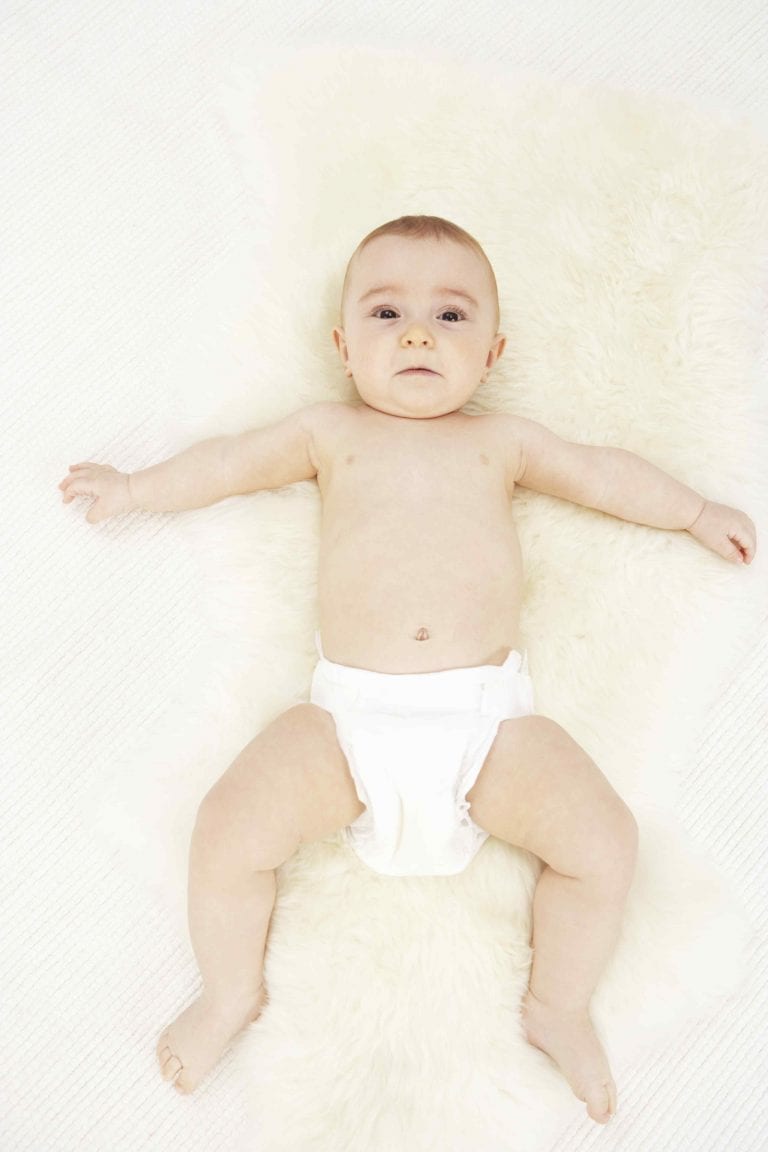What is moro reflex?
Babies are born smart. Almost immediately, your little angel instinctively grasps a finger or roots for a breast. These actions are intuitive and are examples of newborn reflexes. All babies are born with innate reflexes: rooting, sucking, walking and the Moro reflexes, which is why your baby may startle suddenly.
Of these, the one most parents are curious about is the Moro or the “startle” reflex.
Experts think that the Moro reflex evolved to keep babies closer to their caregivers and to prevent falling.
SEE ALSO: First Words: Better Baby Babble and Understanding Baby Babble
Why is my baby flailing?
When a baby exhibits the Moro reflex, his body will tighten, his arms will move sideways palms up, and his thumbs will jut out. It looks like flailing, and for a second, baby is flailing! He may cry or not. And then, just as quickly as it happened, baby will relax, and fold his arms back to his body.
FURTHER READING: How To Make Your Baby Smarter and Babies Learn Language In Womb
What startles baby?
Some babies will startle for no apparent reason. Most babies, however, will startle in response to a loud noise; a change in body position, a sudden movement (anything that feels like falling); a change in environmental temperature; or an unexpected touch. It’s absolutely normal for babies to exhibit the Moro reflex. If your baby cries when startled, keep him more comfortable by swaddling or holding him close.
Babies tend to exhibit the Moro reflex most from birth through age 5 weeks, at which point you may notice baby startles less frequently. This reflex will diminish through time and should completely disappear by 4-6 months of age.
ALSO READS: Baby’s First Steps and Crawling Night School
Creating the Moro reflex
During baby’s 1st physical exam, baby’s healthcare provider will seek to create the Moro reflex by placing baby, face up on a soft, padded surface, such as a crib or bassinet. She will then extend baby’s arms above her torso while holding baby’s hands. She will support baby’s weight just enough to lift baby’s head gently and then suddenly release it, allowing baby to fall backward—just for a split second! Don’t worry; this is perfectly safe with an experienced healthcare provider.
What baby’s healthcare provider wants to see is whether baby exhibits the Moro reflex on only one side of his body, which could mean baby may have a broken shoulder (clavicle) bone or an injury to the group of nerves running from the lower neck and upper shoulder areas (brachial nerves). These injuries usually occur during birth, particularly with full-term babies weighing more than 8 pounds.
ALSO READ: Get Baby Laughing
The lack of a Moro reflex, or an abnormal Moro reflex, is more worrisome than a reflex that occurs on only one side of the baby’s body as it could mean that there could be damage to baby’s brain or spinal cord.
What if I see a change in my baby’s Moro reflex?
If you notice a change in baby’s Moro reflex contact baby’s healthcare provider immediately. She will likely want to perform tests to determine the cause. She may also want to know:
- If there were any problems or events that happened during labor and birth
- Detailed family history
- Any other new or unusual infant behaviors
Life with a new baby is full of surprises. It’s comforting for parents to know that something as odd as the Moro reflex is quite normal and is seen in newborns who have a healthy, intact central nervous system.
We have a range of articles for your Baby’s Milestones:
Tips On Dealing With Baby’s Teething
Deciphering Baby Talk: What is Your Baby Saying
In need of Diapering help?, then do check out our diaper section Mindful Diapering







Comments are closed.